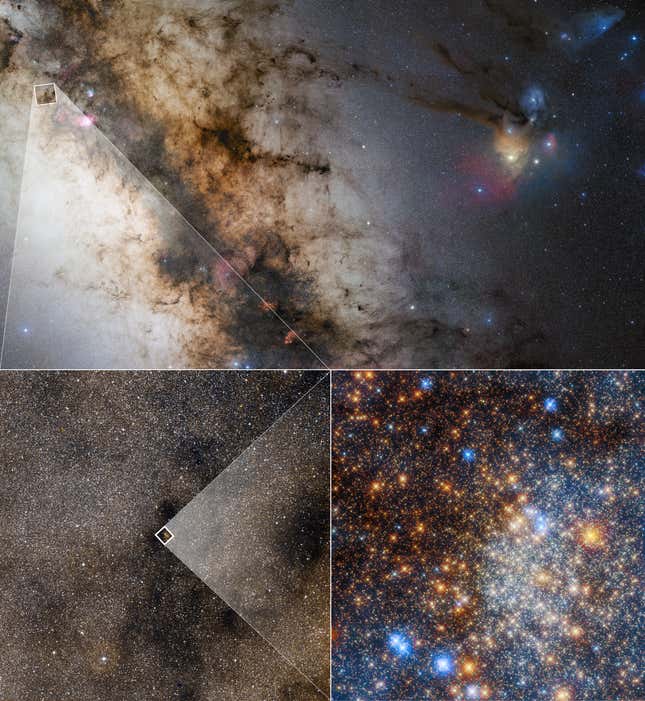موقع شبرون للتقنية والأخبار- متابعات تقنية: [ad_1]
Behold the celestial bounty of space. In an image recently taken by the Hubble Space Telescope, a proliferation of stars in the globular cluster Terzan 12 shine through interstellar gas and dust, making the entire image glow with activity.
The globular cluster is about 15,000 light-years from Earth in the constellation Sagittarius. Globular clusters are groups of ancient stars that populate the area on either side of galactic disks, including that of our own Milky Way. The clusters can be hard to distinguish amid the busyness of space and are sometimes shrouded with dust and gas. That is the case with Terzan 12, but the globular cluster still looks stunning on camera.
The image above is a composite image, stitched together by several exposures taken by hubble on August 8, 2016 and August 13, 2016. The images were taken using Hubble’s Advanced Camera for Surveys and its Wide Field Camera 3, and include some observations taken for a Hubble proposal that seeks to better understand the structure and ages of globular clusters towards the Milky Way’s central bulge.

The bright reddish-orange stars in the image are many times the mass of our Sun, which is pretty average as far as stars are concerned. The blue stars in the image are actually not in the cluster; they are younger, and the cluster is a collection of much older celestial bodies.
Besides looking pretty and conveying a semblance of how much stuff is in space, globular clusters have a few tricks up their sleeve. Two years ago, a team of researchers looking at the globular cluster NGC 6397 found that a group of small, star-sized black holes are lurking in the cluster, holding stars together with their gravity.
That’s not entirely a surprise, as stellar-mass black holes form when an ancient star collapses in on itself, leaving the void-like shadow of black hole in its wake. The globular cluster Palomar 5, for example, is a 10-billion-year old group of stars that has roughly three times more black holes than expected based on the number of stars in the cluster. That team posited that in about one billion years, Palomar 5 will be completely dominated by black holes.
Terzan 12 has a brighter future, at least for the foreseeable. (By the way, it’s really the 11th globular cluster discovered by the Turkish-Armenian astronomer Agop Terzan because Terzan 5 was counted twice. To avoid confusion, Terzan 12 has just been called that, in spite of a missing Terzan 11.)
Because of their superlative age, globular clusters help astronomers understand the life cycles of stars and even seek out binary systems of ancient (and dead) stars, like neutron stars and black holes. But to the lay viewer (and indeed, the astronomer), they’re just a wonderful sight to behold.
More: Breakthrough Gravitational Wave Findings Suggest Supermassive Black Holes Are Constantly Warping Spacetime
[ad_2]



